Celts were the tribal races of people in Europe, primarily residing in Ireland and Scotland, whose origins always remained unresolved.
Celtic warriors sealed their barbaric dignity in the clashes with the Romans, although all of the results did not favor them.
The Celtic warriors were regarded as the most ferocious and distinctive fighters.
Celtic combatants were tall, long-haired, tattooed bodies dressed in tunics, cloaks, and breeches fond of collecting enemy heads in battle.
An exciting part about the troops was including women in notable positions in the army.
Leaders like Boudica, Brennus, and Vercingetorix impressed their rival Romans, who were ruthless and potent with their extraordinary determination and valor.
Some of the notable Celtic war leaders are as mentioned below:
Ambiorix of the Belgic Eburones
Content
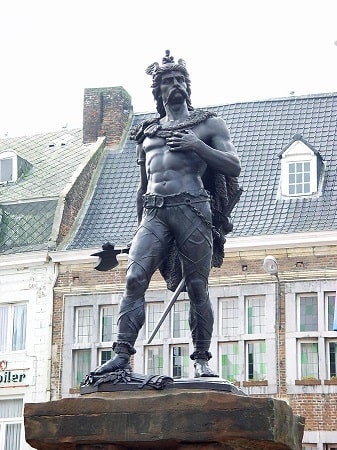
Ambiorix was the co-rules of the Eburones tribe of the Gallia Belgica, who charged Julius Caesar‘s forces in Gaul in around 54 B.CE.
He was known through the accounts of Caesar in Gallic wars despite his youth and rise to power remained in the shadows.
As per Julius Caesar in Bellum Gallicum, Ambiorix shared his kingship with Catuvolcus, “king of half of Eburones,” who supported Ambiorix in his revolts.
Julius Caesar led an attack on Gaul and Belgica in around 57 B.C, where several tribes often fought against each other. As the Romans marched forwards with their expansion campaigns, food scarcity held them back.
The Eburones were compelled to give a share of their wheat harvest, which was not satisfactory to the Romans.
Starving Eburones grew resentful towards Romans camps were also built around the villages of Eburones.
Ambiorix and Cativolcus pounced over Romans wintering in Eburones, causing them to flee as a large Germanic troop was ready to strike them.
The Roman forces left the place the following day while on the way, they were ambushed and massacred by Eburones in the battle of Aduatuca.
Similarly, Ambiorix charged another Roman camp led by Quintus Cicero; however, Cicero’s messenger luckily escaped Belgic lines and reached out to seek Caesar’s help.
Julius Caesar immediately launched a fierce counterattack on Belgic forces, outnumbering many Belgian warriors.
Ambiorix successfully made a run out of the ambush, but Caesar’s wrath befell the brutally slaughtered Belgian forces.
The genocide wiped off the Eburones tribe from history while Ambiorix took a refugee in Germany.
The Belgian national hero, Ambiorix, was contemplated as one of the bravest Eburones by Julius Caesar, who still appears in many Belgian epic poems, plays, and records for his courage to rebel against the Romans.
Boudica of the British Iceni
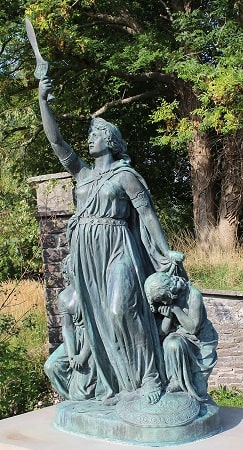
Boudica was the ancient southern British queen of the Iceni tribe of East Anglia who initiated a massive revolt against the conquering Roman forces. She married king Prasutagus, with whom she bore two daughters.
Prasutagus hoped to save his lands from incoming Roman attacks after making Emperor Nero co-heir to this throne and his daughters. But troubles popped up after Prasutagus passed away.
Roman senator for Britain Suetonius Paulinus plundered Prasutagus’s lands and households. Boudica stepped forward, defying the occupation, so the Romans harassed her along with physical abuse her daughters.
A rise of revolt flamed when Boudica joined hands with neighboring tribes of Trinovantes to seek revenge for the humiliations.
Her army led their primary charge on Roman Colchester, destroying the Temple of Claudius.
Similarly, the resentful Boudica and her troop burned down London, Verulamium, and several other Roman cities into ashes, mercilessly killing the inhabitants.
They even trashed plenty of Roman cemeteries, statues, and tombstones.
Finally, Suetonius collected 10,000 soldiers making up the 14th Legion to challenge Boudica in the final battle, whose evidence was found in the “Annals of Rome” fought in the Midlands of England.
Boudica encouraged her warriors to fight fearlessly, prompting them to combat their lost freedom and dignity.
Britons fought with extraordinary mettle under Boudica but unfortunately could not resist the Romans with weapon superiority.
Boudica poisoned herself, refusing to surrender to the Romans, who was remembered in British folklore as a queen of exemplary tenacity.
Brennus of the Gaulish Senones
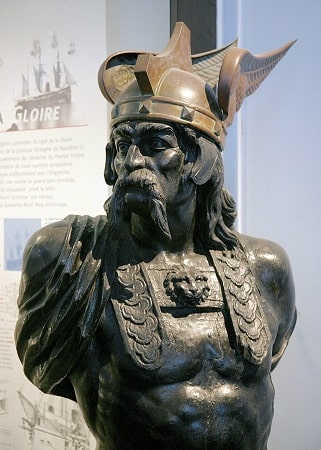
Brennus was the Gallic chieftain of Senones who occupied Rome and demanded a hefty ransom before the withdrawal. He was renowned for his famous saying, “Woe to the Vanquished.”
The Senones’ roots were traced back to France and expanded to annex northern Italy, settling over the Alps. Around 391 B.C, Senones besieged Clusium, who appealed to the Romans.
The Romans dishonored the Senones, which raged Senones to charge upon Rome.
In the Battle of Allia, Brennus encountered the Roman army and defeated them, marking his way to the city. He was the only non-Roman to sack Rome in 800 years.
After the battle, Brennus captures the entire Rome except for the Capitoline hills that were alert before the capture by Senones.
The Romans attempted to buy their salvation after facing the massive destruction of their cities.
According to Roman historians, the Romans negotiated to pay one thousand pounds of gold to Brennus in return for the land.
But a dispute broke out among both the parties over the weights used to measure the gold.
Brennus placed his sword on the scales and uttered his famous words, “woe to the conquered.” Brennus was finally taken down by Marcus Furius Camillus, who gathered his army from the nearby cities.
Caratacus of the British Catuvellauni
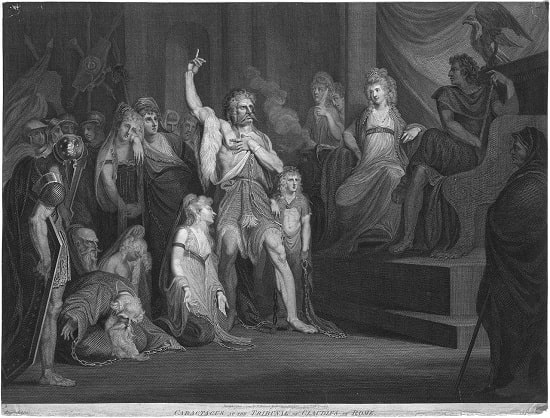
Caratacus was a 1st-century British king belonging to the Catuvellauni tribe who defended his kingdom and people from one of the era’s mightiest powers: the Romans.
Caratacus, along with his brother Togodumnus jointly launched a campaign against the Roman invasion in about 43 A.D for approximately nine long years.
The Catuvellauni were an aggressive and vigorous race capable of safeguarding their territories against the Romans.
The campaign marked its beginning in 43 A.D in southeast England when Roman troops led by Aulus Pautius tried to take over Britain.
In the battle of Medway, Caratacus and his men were held back to the river Thames after fighting for several days and eventually lost his brother Togodumnus.
However, Caratacus fled to Wales, mustering his army weakened by previous conflicts. In the battle of Caer Caradoc in 50 A.D, Caratacus chose a hilly area, assuming it would be favorable to the British with a natural river barrier to stop Romans.
Sadly, the Romans easily navigated the river and overcame missiles directed toward them by the British with their wall barriers.
Caratacus was held captive after losing the battle and was presented before emperor Claudius.
Queen Cartimandua of the Celtic tribe, the Brigantes, deceived him while he was in hiding. She handed him over to the Romans as she was loyal to them.
Caratacus was indeed a manipulative man who caused Claudius to pardon his favor after a heart-capturing speech Caratacus delivered.
He and his family were granted to reside peacefully in Italy for the rest of their lives.
Gaius Julius Civilis of the Netherlands Batavi (Germanic Tribe)

Gaius Julius Civilis was the 1st-century Batavian rebellion against the Romans in 69 A.D. He was found to have been imprisoned many times and nearly executed for leading revolts.
The Batavians rendered valuable services in assembling armed forces joined by several other Germanic tribes.
Vespasian, a supporter of the rival emperor, urged him to prevent the Germanic supplement from reaching Vitellius.
Civilis combined Germanic and Batavian troops to attack the Roman legions across the Rhine.
The Roman garrisons of the nearby Rhine were captured along with twenty-four ships that led to the rise of the Gaul forces of Julius Civilis.
After the triumph over the Rhine region, Civilis resumed his revolt against Vespasian, which gave rise to independent Gallic states.
Roman commanders like Julius Classicus and Julius Taylor also sided with Civilis founding the kingdom of Gaul in the Netherlands.
However, the clash of opinions between different tribes made the cooperation impossible, so Vespasian called off the civil war and called upon Civilis to rest his weapons.
Quintus Petillius Cerialis defeated Civilis, forcing him to withdraw from the island of Batavian; hence he agreed with Cerialis while the compatriots resumed amicable relationships with the Romans.
But Julius Civilis disappeared from the pages of history.
Vercingetorix of the Gaulish Arverni
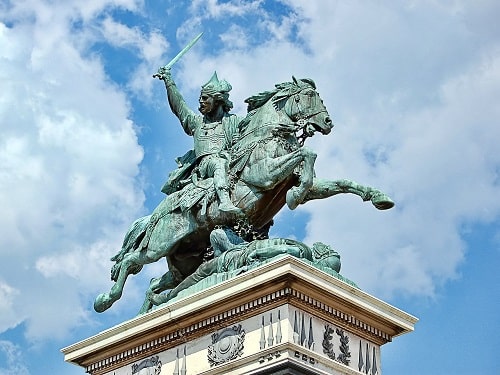
Vercingetorix, “Victor of a hundred battles,” was a chieftain of a Gallic tribe Arverni whose Roman rebellion was smashed down by Julius Caesar.
Unaware of his natural life before the revolt, Vercingetorix came to the limelight.
After establishing an alliance with other Gaelic tribes, he came to power to lead one of the most powerful movements against the Romans.
In addition to it, he won the Battle of Gergovia against Julius Caesar, causing Roman legions to withdraw.
The Eburones tribe massacre raged Vercingetorix to counsel a war against Romans in 52 BCE in Cenabum; he handed out the Roman with weapons and food supplies.
Words of his victory spread out soon all over other Gallic tribes who responded to join him.
Labienus, who served as a substitute for the time being while Caesar was away, had no expertise in dealing with the kind of war Vercingetorix broke out.
Vercingetorix would crumble Roman defense lines and conceal the landscape that weakened Roman troops.
In the battle of Alesia, Caesar’s fortified city was attacked by Vercingetorx’s army of Averni.
Caesar built another outward-facing fortification after the Gallic forces circumvallated the first one that cut-off communication chains of the Gallic armies.
The Romans won the battle after cracking weak points of Vercingetorix’s troops; eventually, Vercingetorix had to surrender to the Romans.
Even in defeat, Vercingetorix did not put down his dignity; instead, he removed his armor in front of Caesar, which surprised many presents in the camp.
Caesar, without any pity, dragged Vercingetorix onto the Roman streets and executed him while his fellowmen were sold as enslaved people or killed in one or the other ways.
Although defeated, Vercingetorix stood as a legend who never gave up on his people and is respected as the French national hero.
Viriathus of the Lusitanians
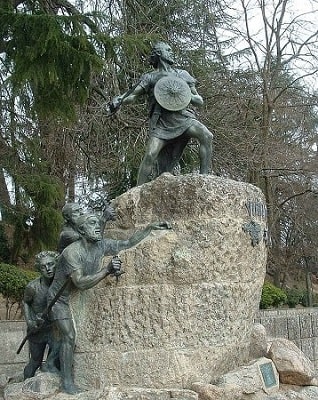
Viriathus was an Iberian Celtic war hero of Lusitania who opposed Roman expansion over the Hispanian region of present-day Spain and Portugal.
He made alliances with other Iberia races supported strongly by Lusitanian and Vetton ethnic groups leading to numerous conquests over the Romans.
He was contemplated as a man of virtues and honesty who would abide by the principles of fair dealing. On top of it, physical attributes and modesty helped him establish compacts.
In the 3rd century, Roman conquest over Hispania emerged for the rich lands of Lusitania that were prolific and productive.
Romans imposed huge taxes on the natives, sold the Iberians as slaves, and brought Rome’s treasures.
Lusitanians revolted against Roman suppression in 194 B.C, when Viriathus was elected as the army leader.
Viriathus employed two primary war tactics known as Bellum; a regular military intervention and latrocinium; guerilla tactics.
In the fire war, Viriathus fought against Caius Vetilius, who had captured Lusitanians and killed many of them. Viriathus then stepped forward to execute an escape plan, destroying Roman armies.
Roman generals like Quintus were sent to oppose Lusitanian forces after Romans could not take down Viriathus in previous attempts.
Despite several ventures, Viriathus seemed nowhere near being defeated; a peace agreement was made between both the groups, which was not per the liking of some Roman senators.
Sadly, Viriathius was tricked by three of his men, who were lured with luxuries and riches by the Romans to kill their leader, which they undoubtedly did. Virathius was assassinated in around 139 B.C, in his sleep.
Olympics of the Celtiberians
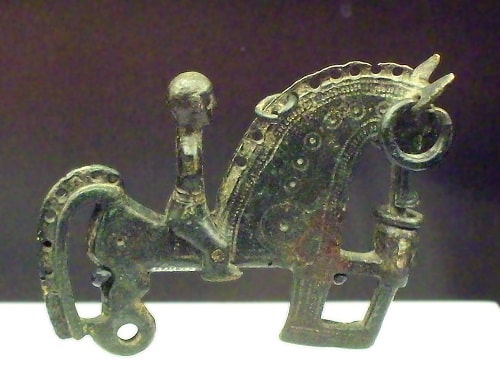
Olympics was the Celtiberian war leader, Olonicus, who fought against the Roman praetor Lucius Canuleyus and his men.
He was said to have behaved as a prophet who wielded his troop’s silver lance.
Conclusion
The Barbarian Celtic leaders were some of the most courageous war heroes of the ancient world.
They proved to be the major threat to Roman civilization as the rising Romans gradually gulped up Celtic tribes.
To avenge the humiliation and abuse Romans practiced on the Celts, rebels like Ambiorix, Vercingetorix, Olyndicus, and even female leaders like queen Boudica revolted against the Romans.
They fought courageously against the mightiest forces of the era; however, not many battles turned in their favor. But these historical legends defended their lands and people till their last remains.
